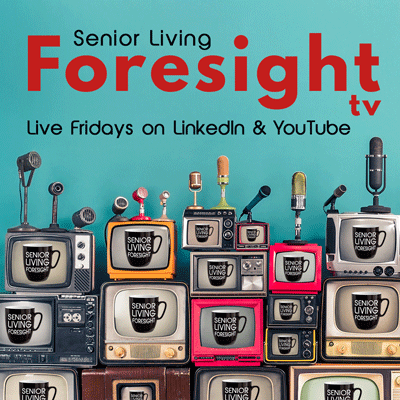By Jack Cumming
Nobody likes to be told what they can and cannot do. It’s not surprising, therefore, that grassroots approaches to aging are beginning to emerge. Prominent among the many initiatives is a “movement” called the “village movement.” It began with friends living in the upscale, quaint neighborhood of Louisburg Square in Boston, just around the corner from the Massachusetts State House.
Those earning a living in senior housing may think they’re all set, but it’s not that simple. Think again. The market is shifting. Consumers will define the future of aging, and they are looking to grassroots communities as preferable to institutionalization without membership.
Ordinary Citizens Arising
Today, that grassroots movement has spread across the country with various degrees of mutual and volunteer support. There’s even a fledgling national organization called The Village to Village Network. Although the network was formed in 2010, its purpose and brand are not well-known. It has potential, but it’s still in the process of self-discovery and formation. It may be ready now to move up to the next stage.
There are many other embryonic self-realization initiatives. Some older people with large, underutilized homes take in boarders to help with costs and for the feeling of family. Other approaches are more formal. There is a movement called “co-housing” or, more abstractly, “intentional community” in which groups of people come together to live in an environment of mutual helpfulness and support.
Other grassroots self-help approaches are less national and internationally ambitious than the organizations linked to above. For instance, Mary Elizabeth Harmon, faced with care challenges involving her parents, brought together a small cluster of neighbors to check on each other and to provide companionship. Her journey combined with her intellect to form Village Company 360, an independent undertaking unrelated to the Village to Village Network.
Most such mutual help and mutual support collaborations are even less formal. People aging together in a shared neighborhood or apartment building often come together. It can be difficult to age alone, especially after the loss of a spouse or as cognitive and other challenges begin to afflict. Even in a CCRC or similar business-generated community, residents can be lonely and may come together in spontaneous alliances for support.
As early in our nation’s history as 1835, Alexis de Tocqueville, a visiting aristocrat from France, published Democracy in America, praising the communal self-help culture of the United States. The mutuality of citizenship is still latent within American culture despite the industrial rise of corporate enterprises, both for-profit and not-for-profit, and the concentration of authority in government.
Fostering Success
What starts small, though, can become bigger. What starts as mutual assistance may evolve to include volunteers wanting to help. The administrative needs of organizations increase as the contagion of neighbors helping neighbors takes hold among spontaneous groups across the nation and around the world.
Think of a typical voluntary consortium of older people wanting to avoid the institutionalization of today’s senior living industry (and it is an industry). Initially, there might be a few or a dozen. Records are easy. People chip in to pay costs. The structure is loose and informal with a family feeling.
That all changes by the time there are, say, 100 or more members. Some are service recipients. Some are voluntary service providers. The idea of chipping in leads to incongruities, and there are calls for fairness and formal dues structures. In short, a collaboration of neighbors becomes more like a structured membership organization.
Citizen Membership
That membership component is central. Today’s institutional senior living almost never includes participants who give or receive services as “members.” The future is a throwback to that American resiliency that so impressed Alexis de Tocqueville in the early 1830s. America is still the innovative republic it was at its founding. When we Americans are in need, we still like to come together to help each other.
Thus, we can conclude, as the senior living industry sages like to tell us, that the demographic wave of the baby boomers is entering old age. They’re not, however, minded to give senior living impresarios the bonanza of occupancy riches that they anticipate. Some boomers love the cocoon of institutionalization, but others… indeed many … do not. For them, these new approaches – villages, co-housing, intentionality, mutuality, cooperation, self-help, generosity – appear to appeal more intensely.
Changing the Concept
That calls for a new paradigm. With that growth to 100 members or more, there is a need for organizational computerization to help local volunteers manage the undertaking. So far, there has been a divide between nascent grassroots advocacy organizations like the “village movement” and purveyors selling membership administration systems and services. That divide may not last. Already, there are tensions between the commercial interests of vendors and the communal nature of grassroots approaches to aging.
To be fully candid, it’s just not that difficult to find a gifted database engineer, who may also be an early aging volunteer, to give a national organization an administrative support system that might be made available without charge beyond nominal organizational dues to member grassroots organizations across the nation.
Evolving Influence
Moreover, for now, even the advocacy of these nascent organizations reflects little more than the loosely formed opinions of the volunteer members of the board of directors. As these movements evolve, their national organization, or organizations, will be able to afford to commission the preparation of apolitical, deliberative, soundly reasoned white papers on major issues like social security, healthcare, and more.
These are matters that never should have been left to the machinations of congressional politicians, and there is an emerging potential to restore these programs to the people and to restructure them to be financially, socially, and politically sound for generations to come.
Even within my own actuarial profession, there are members who approach these programs with political bias. That was less so while Frances Perkins was Labor Secretary, and we can, with grassroots support, restore social programs to the soundness that could stabilize them if they were well-regulated. In 1935, Frances Perkins was instrumental in initiating social programs. It’s time to honor her legacy to make American aging strong and respected.
Takeaways
Thus, while evolving grassroots membership organizations for aging services, like the “village movement,” offer significant advantages over institutional senior living without membership, their national organizations struggle to demonstrate the value they offer to their local chapter members. This article argues that there are two services that they can develop that can give them value, gravitas, and influence.
- Develop a digital membership administration system so that local chapters can deal with a trusted national organization and not get caught up in the sales dynamics of vendor organizations seeking advantage, and
- Foster a reputation for profound, in-depth analyses of issues affecting aging people without the biases that today’s provider trade associations bring to their analyses.
While there is much more that is possible, starting with these two initiatives can quickly alter America’s aging experience and policy for the better.
Consumers Matter
The future of aging lies with consumers. That communal spirit that de Tocqueville so admired nearly 200 years ago is still, today, what makes America unique. Moreover, there are growing worries about the financial soundness of today’s senior housing and about other aspects of what has made serving the aging little more than a business.
As this now nascent grassroots movement takes hold among the rising generation of aging baby boomers, there is the potential to restore our concepts of aging to the people and to give those of advanced years the dignity that their contributions have earned.








Good points but America is moving in the opposite direction. Robert Putnam’s “Bowling Alone” says it all. I wish it were otherwise.
Here in CA., in my county, we have Caregivers: Volunteers Assisting the Elderly, a nonprofit that helps us stay in our homes with various forms of support. This is also one of the largest 55+ communities in the state. They are working with our community of 700+ homes to get volunteers here to help those also here with their needs. This kind of partnership with communities of seniors and nonprofits could help us age in place more successfully and longer. It is a form of village supporting each other.
I am a healthy senior and plan on staying here as long as I can. Facilities do not interest me, nor can I or many others afford them. It is hard enough to afford our homes, with prices increasing rapidly on everything.